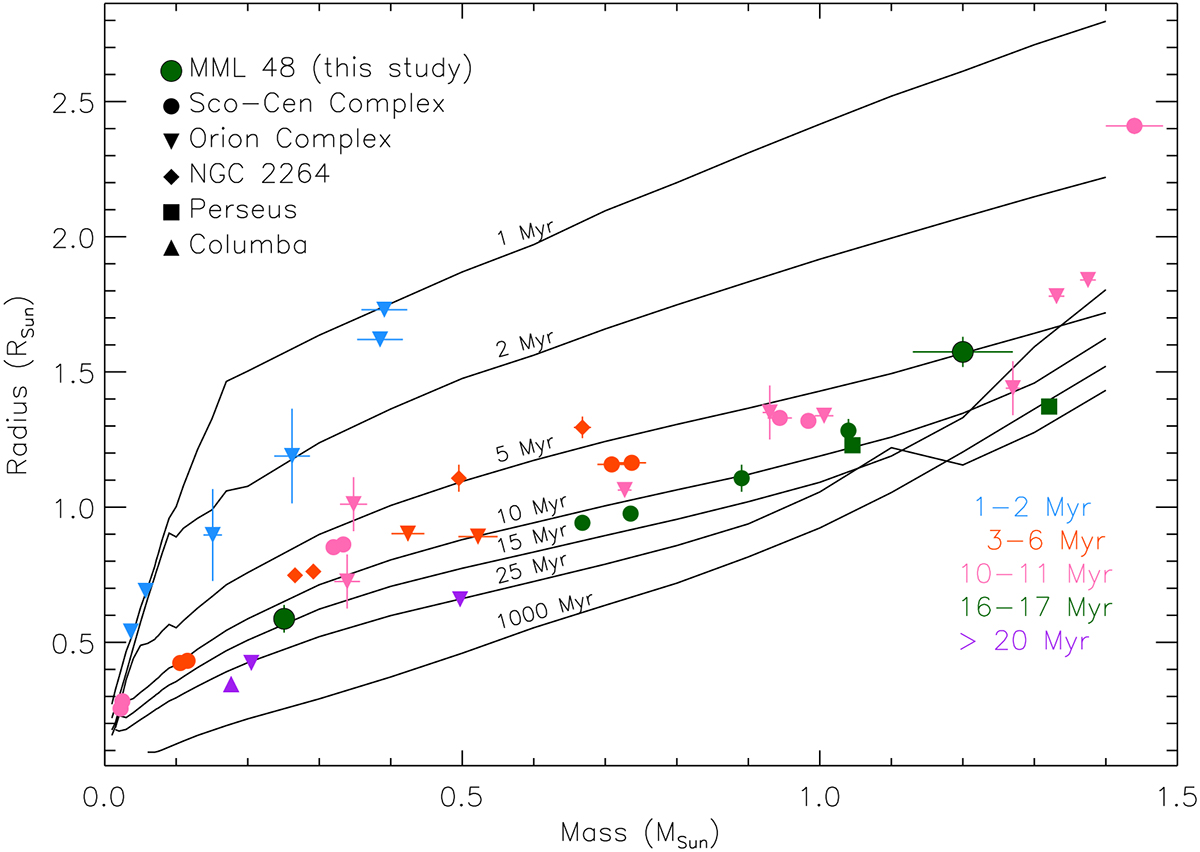Fig. 8.

Download original image
Mass-radius diagram of known sample of pre-main-sequence EBs compared to low-mass stellar models from Baraffe et al. (2015). MML 48 is shown in the large, green dots with uncertainties from the best fit solution. Also in green are the other eclipsing stars with age estimations between 16 and 17 Myr; pre-main-sequence EBs with ages from 1−2 Myr are in blue, 3−6 Myr in orange, 10−11 Myr in pink, and more than 20 Myr in purple. The different points show EBs in the five star-forming regions; EBs in Sco-Cen are shown by dots, in Orion by downward-pointing triangles, in NGC 2264 by diamonds, in Perseus by squares, and in Columba by upward-pointing triangles. In general, the EB stars follow the behavior of the stellar tracks at larger radii, as expected for young stars and standard models. The radius of MML 48 A is larger than the radius of NP Per A by ∼15%, as MML-48 A builds up 3He in its core (see also Figs. 9–11). The errors in all the measured masses and radii are included and in some cases are smaller than the points.
Current usage metrics show cumulative count of Article Views (full-text article views including HTML views, PDF and ePub downloads, according to the available data) and Abstracts Views on Vision4Press platform.
Data correspond to usage on the plateform after 2015. The current usage metrics is available 48-96 hours after online publication and is updated daily on week days.
Initial download of the metrics may take a while.


